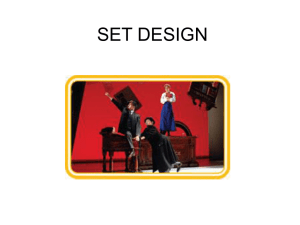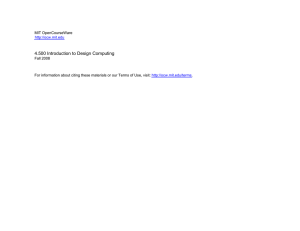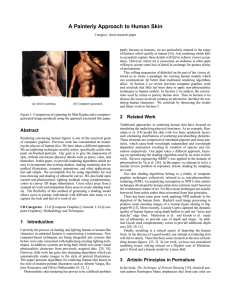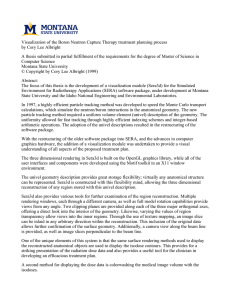4.500 Introduction to Design Computing MIT OpenCourseWare 8 Fall 200
advertisement
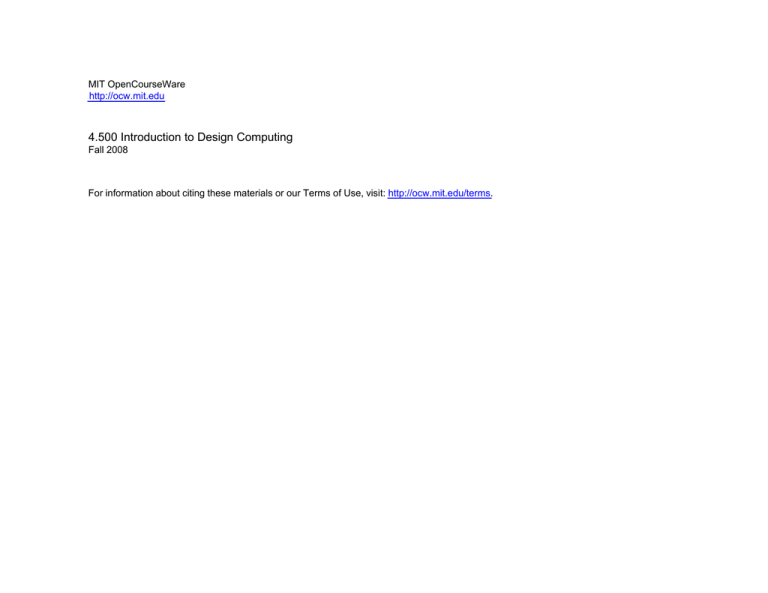
MIT OpenCourseWare http://ocw.mit.edu 4.500 Introduction to Design Computing Fall 2008 For information about citing these materials or our Terms of Use, visit: http://ocw.mit.edu/terms. 4.500 Computing Rendering 1. Why do Architects Render 2. Technical Components of Rendering 3. Illuminating a Model 2 Rendering in Architecture 3 • Test Design Quality & Performance • Test Quantitative Performance • Present Information • Renderings have different purposes 4 Purpose of Rendering • Providers of Light to Models Constructed of Lines • Present Design Possibilities • Software: Most are Rendering and Modeling Packages are Bundled Together 5 [ Quality Vs Quantity ] 6 7 8 [Designing Colors ] 14 [ Designing Artificial Lights ] 15 16 17 18 19 [ Designing Natural Light ] 21 22 23 Summary of Rendering Qualities • Capturing Light & Shadow • Find the right balance of color and depth • Scaling - Texture 24 Technical Components of a Rendering • Lighting Algorithm • Surface Treatment – Texture Maps • Image Manipulation – (Photoshop) 25 Model Representations Surface Models Ruled Surface 26 Solid Modeling NURB Surface Modeling Parametric Modeling Model Representations Surface Models Ruled Surface 27 Solid Modeling NURB Surface Modeling Parametric Modeling Rendered Representation Geometrical Representation Render 28 Hidden Line Raytrace Shading Radiosity Axonometric Projections 29 o 90 o 90 Trimetric 3 axes, no equal angles o 90 Isometric 3 axes with equal angles Dimetric 3 axes, but only two of these have equal angles Figure by MIT OpenCourseWare. Rendering Components 1 - Modeling 2 - Rendering Lights Spots General Day lighting Cameras Lens Manipulation Change in Location Operations on Surfaces Shading Ray Tracing Textures Maps 3 - Animation 30 Rendering Scene 31 Illumination Virtual Camera Geometry CAD Model Surfaces - Wire Frame 32 Surfaces - Shading 33 Surfaces - Color 34 Surfaces – Ray Tracing 35 Surfaces - Radiosity 36 Surface - Textures And Maps 37 Image Manipulation 38 39 Illumination • Import a Model • Setting up Lights • Setting up Cameras • Creating an Image Rendering Process Mono Chromatic Model 40 41 Mono Chromatic Model 42 Color and Light Model 43 Surface and Light 44 Color and Light 45 Color and Light 46 Light & External Textures 47 Texture Maps 48 Final Camera Views 49 50 52


